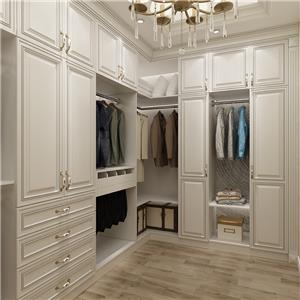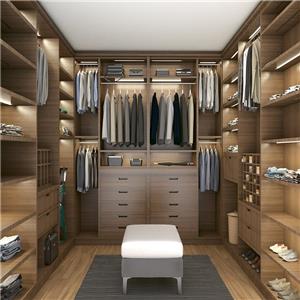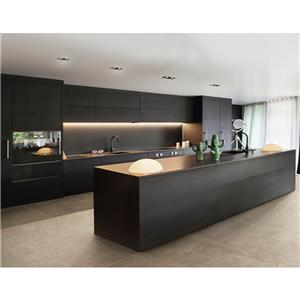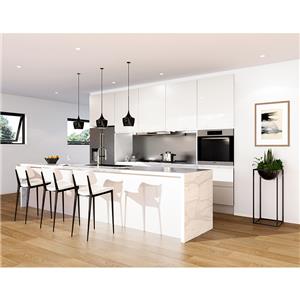The Kitchen's New Favourite: The Extraordinary Appeal of Stainless Steel Cabinets
The Kitchen's New Favourite The Extraordinary Appeal of Stainless Steel Cabinets
In home renovation choices, stainless steel kitchen cabinets are increasingly becoming the preferred option for households due to their durability, ease of cleaning, and stylish appearance. The shift from traditional wooden cabinets – prone to damp and difficult to maintain – to today's stainless steel alternatives, renowned for their resilience and versatility, not only meets the demands of frequent cooking in modern households but also aligns with the prevailing trend towards minimalist, functional home design. Data from a home furnishing platform indicates that by 2025, stainless steel cabinets will command a 28% market share, with young families accounting for over 65% of purchases. This article explores the exceptional appeal of stainless steel cabinets through four dimensions: material advantages, functional value, style compatibility, and purchasing guidance, helping you determine whether they suit your kitchen.
I. Material-inherent ‘durability gene’: Addressing the three major pain points of traditional cabinets
1. Moisture-proof and rot-resistant, bidding farewell to the dreaded damp spring days in southern regions.
During the humid spring season, wooden cabinets develop mould and warped doors – wipe them down only for the problem to return. It's utterly frustrating! This is a common headache for households in southern regions. Stainless steel cabinets, however, are crafted from food-grade 304 stainless steel. Their surface is dense and non-porous, preventing water molecules from penetrating. Even in environments exceeding 80% humidity, they remain free from mould, rust, or deformation. Ms Chen, a homeowner in Guangzhou, shares her experience: ‘After three years with stainless steel cabinets, opening the doors during humid weather still reveals a dry interior—unlike my old wooden cabinets where the shelves always felt sticky.’
Laboratory tests reveal that 304 stainless steel remains entirely free of mould spots or corrosion after 30 days at 50°C and 95% humidity. In contrast, particleboard cabinets under identical conditions develop mould spots within 10 days, with cabinet doors visibly warping after 20 days. For damp zones like kitchen sink areas or spaces near dishwashers, stainless steel cabinets are a natural fit, requiring no additional moisture-proofing measures.
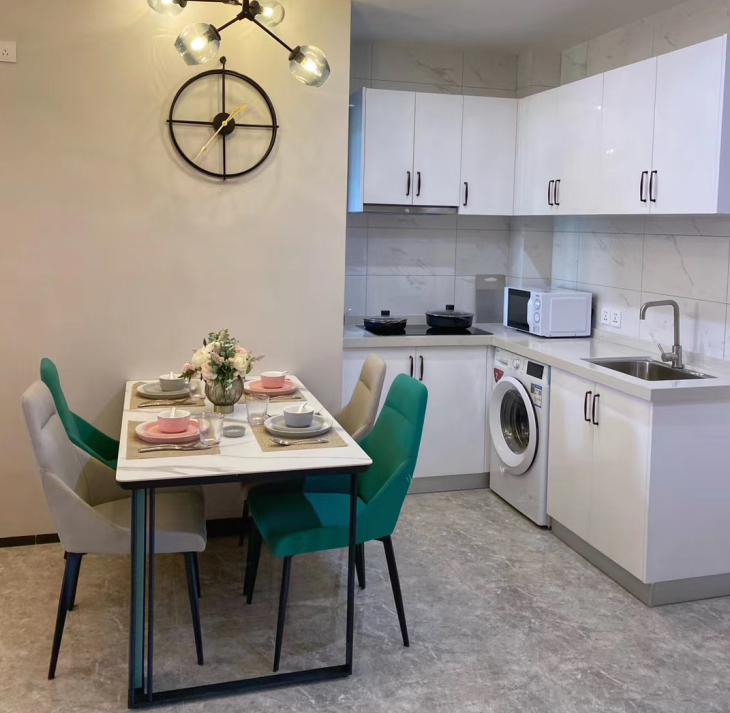
2. Stain-resistant and easy to clean, with grease wiping away effortlessly.
The heavy oil and smoke associated with Chinese cooking make kitchen cabinet cleaning a challenge. Stainless steel cabinets feature smooth, seamless surfaces that repel grease and sauces. Daily cleaning requires only a damp cloth with washing-up liquid, restoring cleanliness in just one minute – eliminating the need for frequent waxing and repainting typical of wooden cabinets. Mr Li, a Beijing homeowner, shares: ‘Oil splatters on cabinet doors after stir-frying wipe away effortlessly. No more crouching on the floor to scrape grease from cabinet crevices.’ Crucially, stainless steel withstands high temperatures (over 200°C), meaning units near hobs remain unaffected by open flames or hot pans. Unlike wooden cabinets, they won't develop scorch marks. A home furnishings testing organisation conducted an ‘oil residue test’ on ten cabinet types. Stainless steel cabinets showed an oil residue rate of just 3%, significantly lower than the 28% for wooden cabinets and 15% for acrylic cabinets.
3. Durable and robust, with a service life exceeding 20 years
Traditional wooden cabinets typically last 8-10 years on average, whereas premium stainless steel cabinets employ a seamless, one-piece construction process. With no visible joints in the cabinet body and hardware such as hinges and handles tightly integrated with the panels, they can exceed 20 years of service under normal use. Ms Zhou, a Shanghai homeowner, has used her stainless steel cabinets for 12 years. ‘Apart from minor scratches (which can be sanded away), neither the cabinet body nor doors have warped. They're far more durable than the wooden cabinets I replaced twice before.’
From a long-term cost perspective, though stainless steel cabinets have a higher unit price, their infrequent replacement requirements result in lower average annual usage costs. Taking a 10-metre-long cabinet set as an example: wooden cabinets would require two replacements over 10 years, totalling approximately £60,000; stainless steel cabinets would need only one replacement over 20 years, totalling approximately £80,000. This equates to an annual cost of £6,000 for wooden cabinets versus just £4,000 for stainless steel.
II. Functional Design: ‘Adapted for Modern Living’ – Three Core Value Enhancements
1. Highly customisable, ensuring a perfect fit even for irregularly shaped properties.
Stainless steel kitchen units employ a ‘laser cutting + seamless welding’ technique, enabling bespoke designs tailored to kitchen layouts (such as diamond, L-shaped, or U-shaped configurations). Whether accommodating sharp corner angles, pipe obstructions, or specialised dimensions, this approach achieves a perfectly flush installation. Ms Zhao, a homeowner in Chengdu, transformed her 6m² irregular kitchen through bespoke stainless steel units. These fully utilised corner and pipe areas: ‘Previous wooden cabinets left a 15cm gap at the corner, but now the stainless steel cabinets fit perfectly, gaining two extra drawers for storage.’
Moreover, the internal layout of stainless steel cabinets offers flexible customisation: adjustable shelves, pull-out baskets, and hooks can be added to organise cookware, spices, and small appliances. For built-in appliances like steam ovens or dishwashers, bespoke cabinetry can be designed to achieve seamless integration, creating a tidier visual appearance.
2. Safe and eco-friendly, with zero formaldehyde to safeguard your family's health.
Wooden cabinets utilise adhesives during production, which may release formaldehyde. Stainless steel cabinets, however, are crafted from metal without any chemical binders, allowing immediate occupancy after installation without the need for ventilation to disperse odours. Data from the National Building Materials Testing Centre indicates that high-quality stainless steel cabinets emit 0mg/m³ of formaldehyde, significantly below the national standard (≤0.124mg/m³). They are particularly suitable for households with elderly members, children, or individuals with allergies.
‘After testing for formaldehyde post-renovation, only the kitchen registered zero levels – all thanks to choosing stainless steel cabinets,’ remarked Mr Wang, a Shenzhen homeowner with allergies. ‘Previously, prolonged stays in the wooden-cabinet kitchen triggered sneezing fits, but now I experience no discomfort whatsoever.’
3. Waterproof and fireproof, kitchen safety – ‘an extra layer of protection’
Stainless steel is non-combustible and non-flammable. Even if an open flame occurs near the hob, it will not ignite the cabinetry, making it safer than wooden cabinets. Furthermore, its waterproof properties can withstand unexpected situations such as sink leaks or burst pipes, preventing water from seeping into lower floors and causing neighbourly disputes. In a residential complex in Hangzhou, a kitchen sink leak caused wooden cabinets to warp and mould after prolonged exposure to water. In contrast, the adjacent stainless steel cabinets sustained only minor water stains on their base, which dried without any lasting effects.
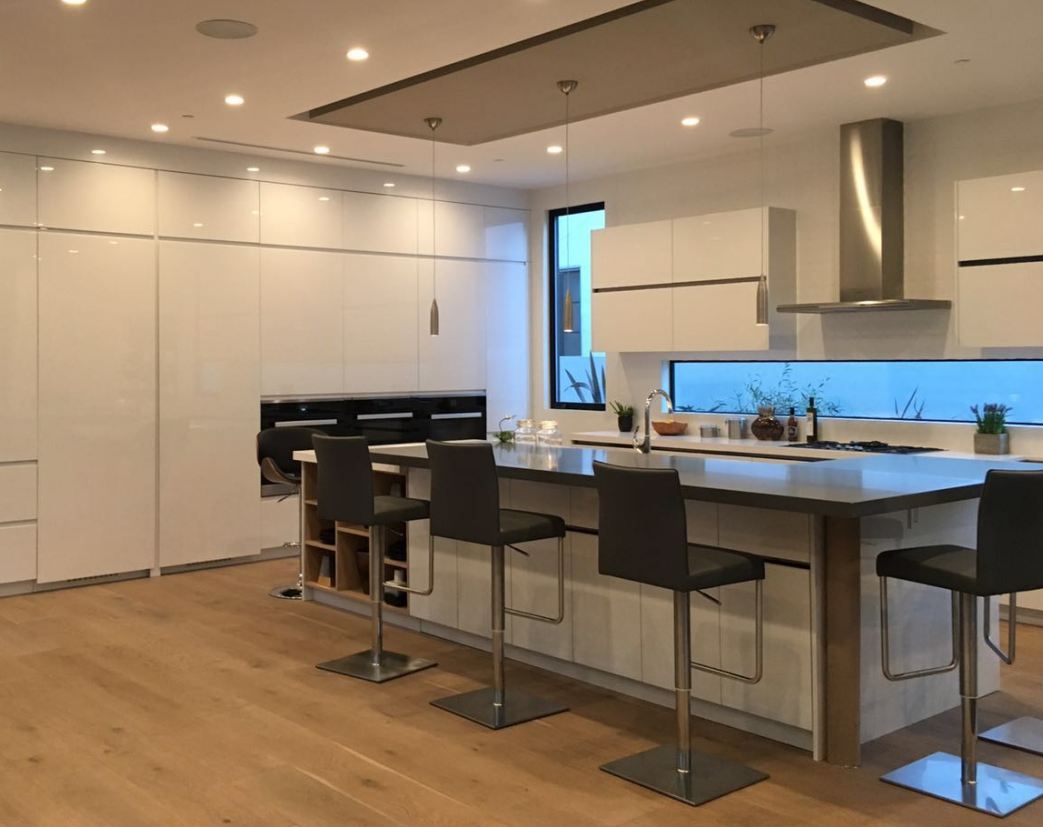
III. Style Adaptation: ‘Breaking Stereotypes’ – More Than Just ‘Industrial Style’, Versatile for Multiple Settings
When stainless steel kitchen cabinets are mentioned, many associate them with a ‘cold industrial aesthetic’. However, contemporary stainless steel cabinets have long transcended stylistic limitations. Through surface treatments and clever pairing techniques, they now complement diverse home interiors:
1. Minimalist Style: Matte brushed finish + handle-free design, maximising sophistication
Stainless steel cabinets with a matte brushed finish exhibit a refined metallic texture. Paired with handle-free doors (push-to-open mechanism), their clean, flowing lines perfectly complement minimalist kitchens. Combined with light grey quartz stone worktops and white wall tiles, the entire space feels airy and pristine. Ideal for compact homes under 90m², this design visually ‘expands’ the space. Ms Zhou's 8m² Shanghai kitchen: ‘Matt stainless steel cabinets with handle-free design – friends remark it doesn't resemble traditional stainless steel, but feels remarkably refined.’
2. Modern Luxury Style: Mirror-Polished Finish + Metallic Hardware for Elevated Sophistication
Mirror-polished stainless steel cabinets boast a glass-like sheen. Paired with brass or gold handles and hinges, they instantly elevate the kitchen's luxurious feel. Pair with dark stone worktops and glass-fronted wall units to create a sophisticated ‘metal + stone’ combination, ideal for medium-to-large kitchens over 100m². Mr Li's 12m² U-shaped kitchen in Beijing features ‘mirror-polished stainless steel cabinets with brass handles, complemented by black stone worktops – making every cooking session feel like a ritual' .
3. Vintage Style: Distressed finishes + timber elements counteract coldness
Through specialised ageing techniques, stainless steel cabinets achieve a vintage metallic texture. Paired with wooden worktops and retro tiled walls, this neutralises the metal's coolness to cultivate a cosy, nostalgic ambience. Ideal for households favouring vintage aesthetics, such as pairing with green walls and antique pendant lights to craft an ‘American country’ or ‘French vintage’ kitchen. Ms Zhao from Chengdu's vintage-inspired kitchen features ‘distressed stainless steel cabinets + solid wood countertops, combining the durability of metal with the warmth of timber – perfectly aligned with my aesthetic preferences.’
IV. Buying Guide: 3 Steps to Avoid Substandard Products and Select the Right Stainless Steel Kitchen Cabinets
1. Check the material: Opt for ‘304 stainless steel’ and avoid ‘201 stainless steel’.
Stainless steel kitchen cabinets on the market primarily come in two grades: 304 and 201. 304 stainless steel contains 8%-10% nickel, offering corrosion resistance and oxidation resistance, making it a food-grade material. 201 stainless steel contains only 1%-3% nickel, is prone to rust, and may contain excessive manganese, making it unsuitable for kitchen use.
When selecting, employ these ‘3 identification methods’: ① Check the product inspection report to confirm the material is 304; ② Use a magnet test: 304 stainless steel has weak magnetism (some are non-magnetic), while 201 stainless steel is strongly magnetic; ③ Apply stainless steel testing solution to the cabinet surface: 304 turns blue, 201 turns red.
2. Assess craftsmanship: prioritise ‘seamless welding’ and ‘surface treatment’
Premium stainless steel cabinets employ ‘seamless welding’ technology, ensuring no visible gaps at joints to prevent grease and water penetration. Surface finishes are selected based on style requirements: - Brushed matt (scratch-resistant, ideal for high-frequency use) - Mirror polish (aesthetically pleasing but prone to fingerprint marks, requiring regular cleaning) - Sandblasted finish (anti-slip, suitable for worktops).
Additionally, door ‘flatness’ is crucial: premium stainless steel doors are pressed from solid sheets, preventing warping or deformation; inferior doors may exhibit unevenness, compromising smooth opening and closing.
3. Inspect hardware: Opt for branded hinges and handles to ensure durability
Stainless steel cabinet hardware (hinges, handles, runners) directly impacts longevity:
- Select imported hinge brands (e.g., Hettich, Blum) with hydraulic damping for silent, smooth operation and over 100,000 cycles. Handles should be solid stainless steel to prevent breakage common in hollow designs. Choose 304 stainless steel runners with a load capacity ≥50kg for smooth, snag-free extension.
Test on-site during selection: Open and close cabinet doors to assess cushioning effect; pull drawers to check for smooth operation and absence of unusual noises.
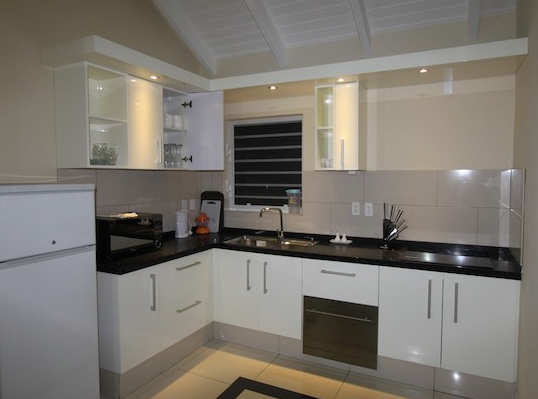
V. Frequently Asked Questions: Addressing Your Concerns
1. Are stainless steel cabinets ‘cold’?
Pairing them with wooden worktops and soft furnishings (such as fabric curtains and greenery) can counteract the metallic chill. Moreover, cabinets featuring a matt brushed finish offer a refined texture that feels warmer than mirror-polished options, eliminating concerns about a ‘cold’ sensation.
2. Are they expensive?
Stainless steel cabinets cost approximately ¥1,500–3,000 per linear metre (depending on material and finish), slightly less than solid wood cabinets (¥2,000–4,000 per linear metre) but more than particleboard cabinets (¥800–1,500 per linear metre). However, considering longevity and maintenance costs, they offer superior value for money.
3. Can scratches be repaired?
Minor scratches (depth ≤0.1mm) can be restored by sanding along the brushed grain with fine-grit sandpaper (400 grit or higher). Deeper scratches require professional polishing machine treatment, after which the repair is virtually invisible.
Conclusion
Stainless steel kitchen cabinets: more than just “durable”, they represent a lifestyle choice.
From tackling damp and mould to complementing diverse styles, from zero-formaldehyde eco-friendliness to two-decade durability, stainless steel kitchen cabinets possess an extraordinary allure. They transcend mere kitchen furnishings, embodying the modern household's blend of practicality and aesthetic pursuit.
If you've grown weary of wooden cabinets' delicate nature and desire a kitchen that's robust, easy to clean, and eco-friendly, consider stainless steel cabinets. They may not be the cheapest option, but they are undoubtedly a worry-free, long-lasting choice. As Mr Wang, a homeowner in Shenzhen, remarked: ‘Choose right once, and enjoy peace of mind for a decade – that's what appeals most about stainless steel cabinets.’
If you're planning your kitchen renovation, why not visit our showroom to experience the quality of stainless steel cabinets firsthand? They might just become your kitchen's new favourite!
How to buy kitchen cabinets? ➡
Exclusive Interview with Homeowner ➡
Struggling to turn around in your kitchen? ➡
Is the trend towards "de-living-rooming" design catching on? ➡

